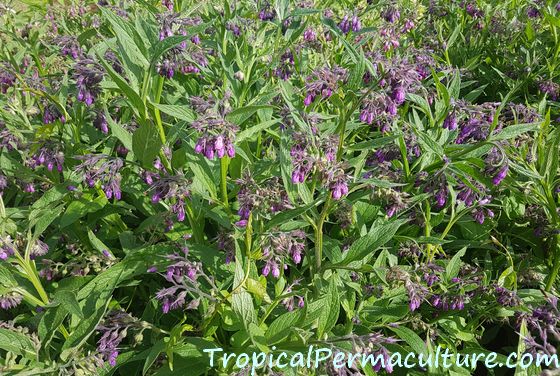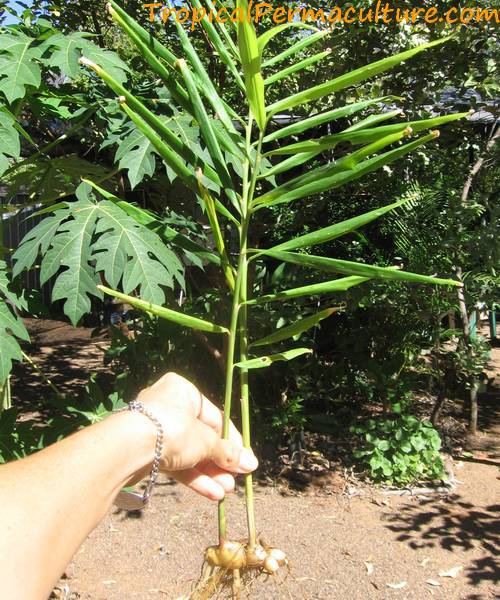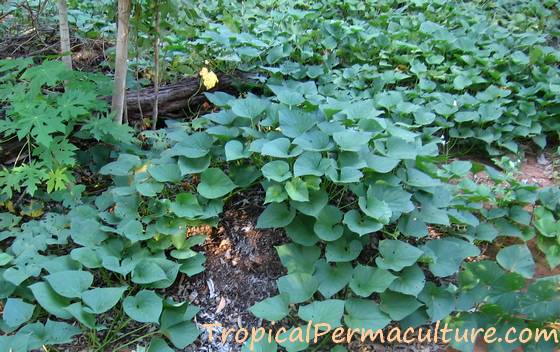Growing Amaranth As A Food Plant (Amaranthus Spp.)
How To Grow Amaranth, Why, And What To Do With It
Growing amaranth is possible all year round in the tropics. That's one of the reasons it is an essential and ubiquitous plant in my permaculture garden.
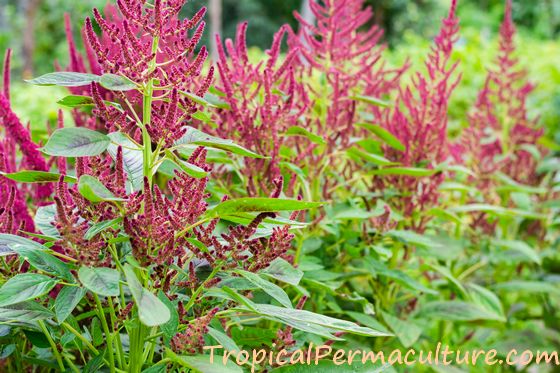
Here are some more good reasons to grow amaranth plants:
- It is a very nutritious leaf and grain.
- It makes yummy spinach.
- Amaranth leaves make nice salad greens. They are not as slimy as the other tropical leafy greens that are supposed to serve as lettuce substitutes in hot climates.
- Amaranth self seeds.
- Amaranth flowers can look spectacular (depends on the variety).
What Is Amaranth?
Most people I talk to have never heard of amaranth, yet amaranth is a leaf vegetable and grain that has been eaten for centuries all over the world.
Amaranth seeds have been used since ancient times in Central and Latin America and in the countries of the Himalayas. Amaranth leaves are used across Asia.
The green-leaved varieties are popular in India and other places, ...
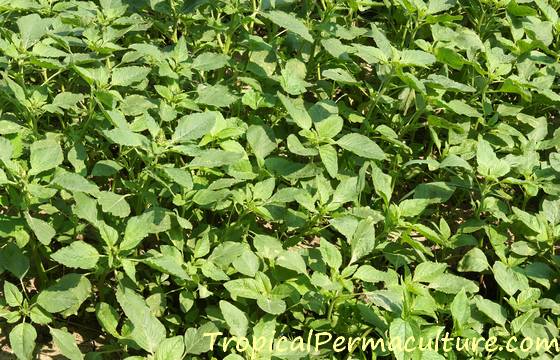
... the Chinese prefer their amaranth red-leaved ...
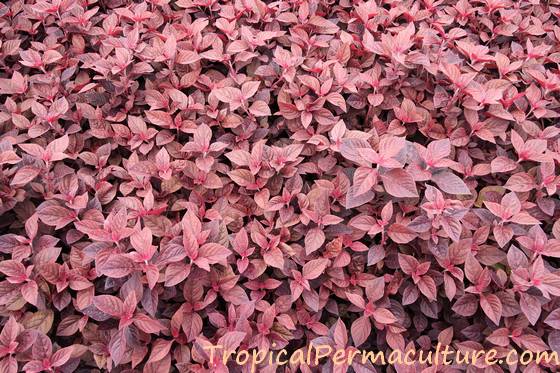
... and amaranth grain once was a staple in the diets of pre-Columbian Aztecs.
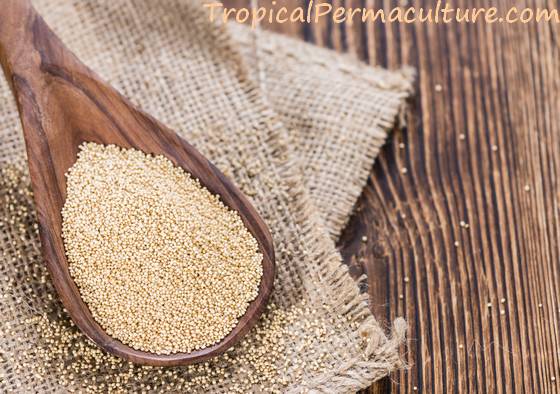
Amaranth And Nutrition
Technically amaranth is a seed not a grain.
The amaranth family (Amaranthaceae) includes the previously separate family of the beets and spinaches, the Chenopodiaceae. Amaranth is not related to the Graminae, the real grains.
Compared to other grains amaranth seeds have a much higher content of the minerals calcium, magnesium, iron and of the amino acid lysine. (Grains are usually low in that, corn has none. Most people get their lysine from meat.)
Amaranth seeds are also high in potassium, zinc, vitamins B and E and can contain over 20% protein (depending on the variety).
You can find amaranth grain in health food stores or the health food aisles of supermarkets in the form of amaranth flour and the popped seeds as amaranth cereal.
I never tried the flour (I don't cook or bake much, if at all). But I can tell you that amaranth cereal is delicious.
Amaranth leaves are nutritionally similar to beets, Swiss chard and spinach, but are superior (as is usually the case when you compare "wild" plants to highly bred commercial varieties.)
For example amaranth leaves contain three times more calcium and three times more niacin (vitamin B3) than spinach leaves. Or twenty times more calcium and seven times more iron than lettuce, which simply isn't all that nutritious.
Amaranth is much closer genetically to its wild ancestors than our over developed and nutritionally depleted typical vegetables. Amaranth leaves are an excellent source of carotene, iron, calcium, protein, vitamin C and trace elements.
Local farmer's markets may offer bunches of amaranth greens, but those don't keep at all so you'd have to use them quickly. It's much easier to grow amaranth and cut it as needed.
What Does Amaranth Look Like?
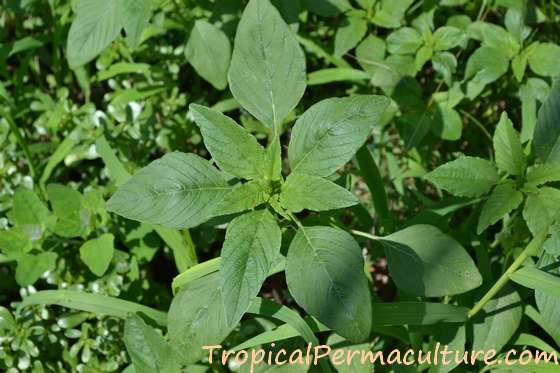
Amaranth is an upright, moderately tall, broad leafed, annual plant. There is a number of different species of amaranth and a huge number of varieties within those species.
Amaranth comes in all sizes, shapes and colours. The leaves can be round or lance shaped, 5-15 cm (2-6 in) long or more, light green, dark green, reddish or variegated.
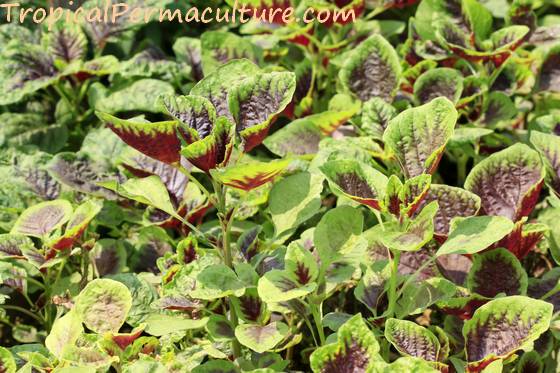
Seeds maybe white, yellow, pink or black. Flowers can be huge tassles or tiny globes, red, pink, yellow or cream.
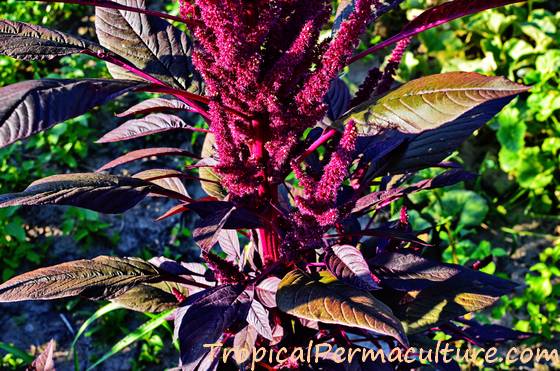
Amaranth is related to a common weed you probably know, pigweed.
Or rather, the pigweeds (there are different kinds) are amaranth species. The weedy amaranth types are also edible and taste much like the cultivated varieties. They just don't grow as large and leafy, or produce as many grains, or look half as good in the garden.
Some cultivated amaranth varieties grow to two metres or six feet tall and individual plants that landed in a great spot with no competition may grow even taller.
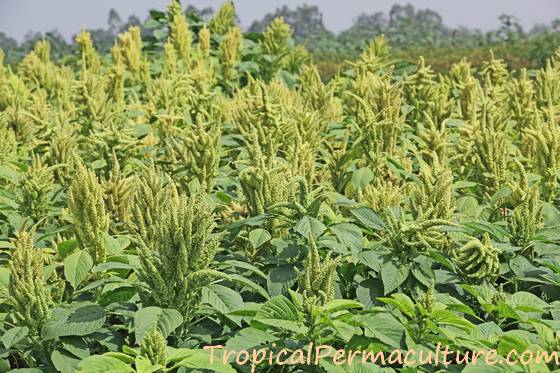
The flowers can be striking and they produce a huge number of tiny seeds. (Over 100,000!)
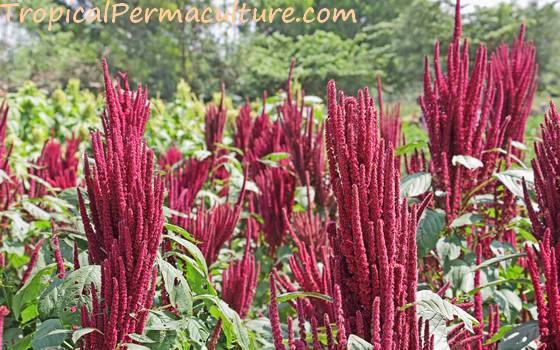
Do you know the flower Love Lies Bleeding? That's an amaranth species, Amaranthus caudatus, and yes, the leaves and seeds are edible and nutritious like any other amaranth. The same goes for the gomphrena (bachelor's button) and celosia (cock's comb or woolflower) species.
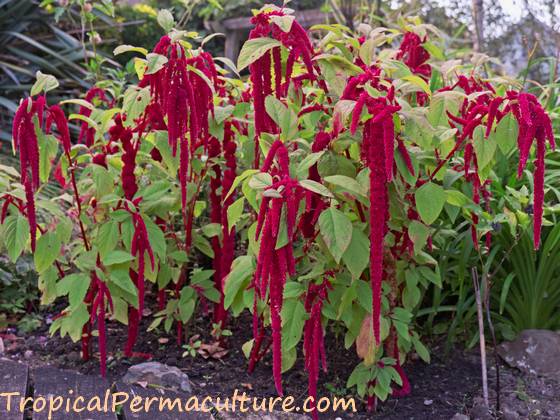
You probably won't find leaf and grain amaranth seed in your local garden centre (you should find amaranth flowers), but online seed retailers who specialise in heirloom seeds, organic seeds, vegetable seeds or anything similarly sensible usually carry them.
Don't expect the cultivated leaf amaranth species to look as stunning as Love Lies Bleeding or some grain amaranths. The leaf amaranth flowers are usually much smaller, and creamy or greenish in colour. You grow those for food only, not for looks.
How To Grow Amaranth
Well, there really isn't much to it.
Amaranth seed is very fine. If you grow leaf amaranth you want a large number of plants because you will likely harvest the whole plant while it is still young. There is no point starting it in punnets.
(Unless you only have a few seeds. Then you can start your first plants in pots or something. But do collect enough seeds for the next planting to save that step. See below.)
Amaranth prefers warm weather and full sun. If you live outside the tropics, make sure the soil has warmed before planting.
Thinly sprinkle the seed on the ground and rake it in. That's it.
The seeds should germinate within 3-10 days, depending on the temperature.
If you need to thin your plants, cut and eat them. You can continue to do that as they grow bigger and bigger and need more space.
It will take 4-5 months until the seed heads ripen.
Like all fast growing leafy greens, amaranth loves rich soil with steady moisture and a good supply of nutrients, especially nitrogen. But it isn't as fussed as spinach or silverbeet would be. Amaranth is much hardier. It can cope with heat and dry conditions a lot better than any other leafy green. (One more good reason for this lazy gardener to grow it!)
If you are frustrated with trying to grow tasty, leafy greens in the tropic, amaranth is a plant you should start growing today.
Harvesting, Using And Cooking Amaranth
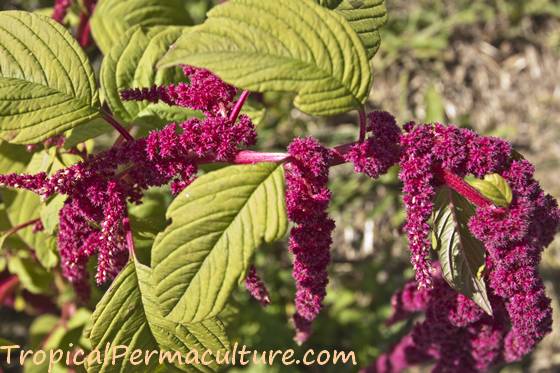
Harvest leaf amaranth whenever you like. Ok, harvest it as early as you like and definitely before it flowers.
(You can eat the buds and flowers, but the leaves will not be as tender and tasty anymore once the plant flowers.)
The youngest leaves have a milder flavour and are good to use in salads, the mature leaves are better cooked like spinach. Anything you would use spinach for, just use amaranth leaves exactly the same way.
You can use the young stems as well. (Older stems would need peeling and I sure won't bother with that.)
I usually cut my amaranth when it is between one and two feet tall. I just cut the whole stem, maybe six to ten inches above the ground. The stem will re-shoot and I may harvest that again (unless by then the bugs demolished it).
I always leave the two or three biggest, healthiest amaranth plants in a bed alone and let them go to seed.
Once the flower head has mostly dried up I cut that and shake the seeds out into a paper bag. That gives me thousands of amaranth seeds for the next few plantings. Seeds also drop on the ground as the seed heads ripen and during harvesting.
After shaking out the seeds into the bag I crunch up the left over, dry seed head (which still contains seeds) and spread the remains over some other areas.
And if I'm about to move the mobile chicken pen I throw it in there for the chickens to spread.
As a result there is always amaranth growing here somewhere, even when I don't get around to planting it properly.
I grow three amaranth varieties. One ornamental variety, two metres tall with massive red flower heads, one leaf amaranth, and weed amaranth :-). And I eat all of them. I eat whatever is closest to the kitchen and ready.
Despite amaranth being one of the precious few grains that is actually feasible for home growing, I don't grow grain amaranth. Harvesting and cleaning enough grain to make it worthwhile sounds like a lot of work. I also can't see myself getting into making my own amaranth flour or popping the seeds for cereal etc.
Luckily not everybody is as lazy and kitchen averse as I am, so here are some tips for you from my readers.
Thank you to Rosita for sharing how she grows and collects amaranth seeds, and how she uses the flowers and seeds in cooking.
How To Harvest Amaranth Grain
by reader Rosita Arvigo
Collecting Amaranth Seeds
I have personally collected amaranth seeds many times over the 35 years of living in Central America. My variety is A. retroflexus, a common food crop here.
The stems can be cut for greens several times as they sprout right back giving twice as many as before it was cut. Mine give leaves for 3-4 months. Then, I let them gradually go to seed - you get many more seeds that way, too - and cut off the seeding tops. By the way, the flowers are delicious to eat steamed or sauteed as well.
I lay the seed heads on a cloth and dry them in the sun for two days, bringing them in every night to avoid dampness. Then, I shake the seeds vigorously in a paper bag and then strain through a sieve or use the wind to remove the outer shell.
Frankly, with this variety, it is an all-day job to harvest about a pint of lovely, shiny seeds.
I roast them and add them to oatmeal or tortillas just a little at a time as they are kind of gelatinous.
Hope this helps everyone. It's well worth the effort, I say.
A thank you also to Nancy, for sharing how she uses amaranth, makes amaranth flour and for her super simple amaranth bread recipe.
How To Cook Amaranth Grain
by reader Nancy Weston
Some Information On Amaranth :)
My partner and I live a sustainable lifestyle. Amaranth happens to be one of our two "stock" produces, the other being kidney beans.
Amaranth grain is probably the easiest of the grains to produce. With a simple wire bowl shake they are ready for any preparation.
We usually grind it to amaranth flour in the mill. Mixed with water to a dough consistancy it is pushed flat and toasted to a flatcake/pita bread.
We use this to "wrap" our veggies cold or tear it to dunk in our veggie stews or soups.
Amaranth is also a herbal medicine used to inhibit blood loss and as a contraceptive. It is also a dye and can be used in herbal shampoos.
